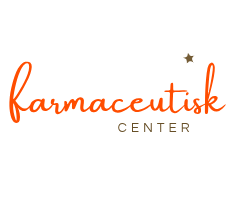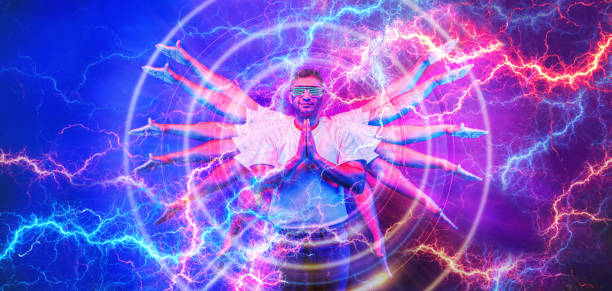Let us talk about Psychedelics and Spirituality. For many people who try them, psychedelics aren’t just powerful drugs — they’re doorways. Whether in Indigenous ceremonial contexts, 20th-century countercultural rites, or modern clinical trials, substances like LSD, DMT and psilocybin (the active compound in “magic mushrooms”) often produce experiences that users describe in spiritual, religious, or mystical terms. Scientists, clinicians, writers and participants approach those accounts from different angles: as neuroscience phenomena to be mapped, as therapeutic tools to alleviate suffering, and as genuine encounters with what users call the numinous or transcendent. Beckley Retreats+1
Psychedelics and Spirituality: A spectrum of sacred experiences
Descriptions from users and researchers converge around a few recurring themes: feelings of unity or oneness, dissolution of the self or ego, encounters with ineffable meaning, and sometimes encounters with entities or “otherworldly” realms. These phenomenological features map closely onto classic accounts of mystical experience from religious traditions, prompting researchers to use the language of “mystical-type” or “spiritual” experiences when reporting outcomes. Clinical studies have repeatedly documented that high-dose psilocybin can occasion such experiences, and that those experiences often correlate with lasting positive changes in mood, outlook, and behavior. PMC+1
Psilocybin (magic mushrooms): ritual roots and therapeutic promise
Psilocybin has a long ceremonial history in Mesoamerican spiritual practices and has re-emerged in contemporary clinical research because of its ability to occasion profound mystical-type experiences. Trials at major research centers find that a substantial fraction of participants report experiences described as deeply meaningful or religious, and those experiences often predict therapeutic benefit — for example, reductions in depression, anxiety in terminal illness, and increased well-being. Observational and clinical work also shows that psilocybin’s effects can persist for weeks to months, possibly because the experience reshapes how people relate to self, time and meaning. Beckley Retreats+2The Guardian+2
DMT: “breakthroughs,” otherworldly encounters, and philosophical puzzles
Reports of N,N-dimethyltryptamine (DMT) — whether smoked or occurring endogenously — often highlight sudden, intense breakthroughs into scenes populated by geometric structures, beings, or an overwhelming sense of alternate reality. Qualitative analyses of DMT trip reports find rich, consistent themes: contact with intelligences, encounters that feel culturally archetypal, and narratives that resemble traditional spiritual visions. Scholars debate whether these are simply brain-generated hallucinations, transpersonal encounters, or something else — and whether endogenous DMT plays a role in near-death or religious experiences — but the phenomenology is striking and has fueled both science and speculation. PMC+1
LSD: self-confrontation, expanded perception, and the entropic brain
LSD has historically been associated with intensified perception, ego-dissolution, and deep personal insight. Contemporary neuroimaging work shows that LSD increases measures of brain entropy and disrupts normal large-scale network patterns (such as the default mode network), which may underlie the sense of boundary-dissolution and intensified meaning that users report. Many writers and some researchers frame LSD’s effects as forcing a confrontation with the self: the vivid sensory and cognitive shifts can surface unresolved content, prompt psychological reflection, and sometimes produce a sense of awe or humility that users interpret spiritually. PMC+1
Two broad interpretations: occasion vs. predisposition
A central question runs through both academic and popular conversations: do psychedelics cause spiritual change, or do people inclined to spirituality gravitate toward psychedelics? Evidence suggests both dynamics play a role. Cross-sectional surveys show psychedelic users score higher on measures of spirituality and mystical belief than non-users, while longitudinal and experimental studies show that a single high-quality psychedelic session can produce long-lasting increases in spiritual outlook and prosocial values for many participants. Context matters enormously: set (mindset), setting (environment), ritual framing and integration practices strongly shape whether an experience is interpreted as spiritual and whether its benefits endure. Psychology Today+1
Mechanisms: brain, meaning-making, and the stories we tell
Neuroscience offers models — disruption of habitual network patterns, increased brain entropy, and altered sensory processing — that help explain how psychedelics loosen deeply ingrained patterns of perception and self-representation. But neuroscience alone doesn’t fully explain the felt significance people ascribe to their experiences. Anthropology, psychology and philosophy point to the role of cultural frameworks, personal narrative, and guidance: people often translate raw perceptual upheaval into spiritual meaning through stories, symbols and traditions. Integration work — therapy, spiritual counseling, meditation or community ritual — helps ground experiences so that they become lasting shifts rather than fleeting anomalies. PMC+1
Risks, ethics and the question of belief change
Powerful experiences can be healing, but they can also be destabilizing. “Bad trips,” inadvertent changes in worldview, and potential harm when people are vulnerable (for example, during end-of-life treatment) raise real ethical questions. Researchers and ethicists emphasize informed consent, careful screening, supportive setting and professional integration to reduce harms and avoid coercive or manipulative attempts to shape someone’s beliefs. The possibility of unintentionally altering core religious beliefs — especially in psychologically fragile populations — requires sensitivity and rigorous oversight. The Guardian+1
Where science and spirituality meet (and where they don’t)
What unites many strands of evidence is a pragmatic recognition: psychedelics reliably alter experience in ways that overlap with historical accounts of mystical states, and those altered states often have measurable psychological consequences. Whether those consequences indicate contact with an ontologically independent “spiritual realm” remains a matter of personal belief and philosophical stance. For clinicians and many researchers, the operative question is therapeutic: can these experiences be harnessed safely to relieve suffering and foster growth? For many participants, the experience itself — not the metaphysical explanation — is primary. PMC+1
Practical takeaways
- Psychedelics frequently occasion experiences labeled “spiritual” or “mystical,” and these experiences can predict lasting improvements in mood and outlook when delivered carefully. PMC
- The set, setting and integration practices shape whether an experience becomes a source of spiritual growth or distress. ScienceDirect
- Scientific models (network disruption, entropy) help explain how these substances alter perception and selfhood, but they don’t settle metaphysical questions about the reality of the experiences. Psychedelics and Spirituality.

